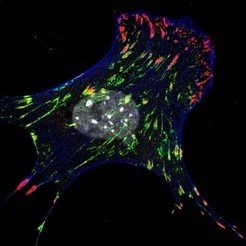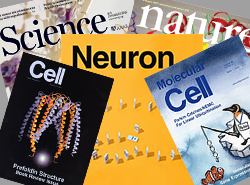
Tissue are composed of cells and their surrounding extracellular matrix. During embryonic development, wound healing and cancer metastasis, cells move within tissues. How they do it, is a highly relevant scientific and medical question. Now, researcher at the Max Planck Institute of Biochemistry in Martinsried found a new molecule that regulates the speed of cell migration. Kank2, the newly discovered protein, diminishes the force transmission between cells and extracellular matrix. Thereby the cells find less grip on the ground and move slower.
In tissue, cells are embedded within the extracellular matrix, a meshwork of different protein assemblies. Integrins are anchor proteins on the cell surface, which on the one hand enable cells to adhere to the extracellular matrix, and on the other hand connect to the actin cytoskeleton inside the cells. Hence, integrin-mediated adhesion points transmit mechanical force generated by the contractile cytoskeleton to the extracellular matrix, which is needed for cell migration. The stronger integrin-based adhesions are pulled by mechanical force, the tighter they are anchored on the extracellular matrix. More





